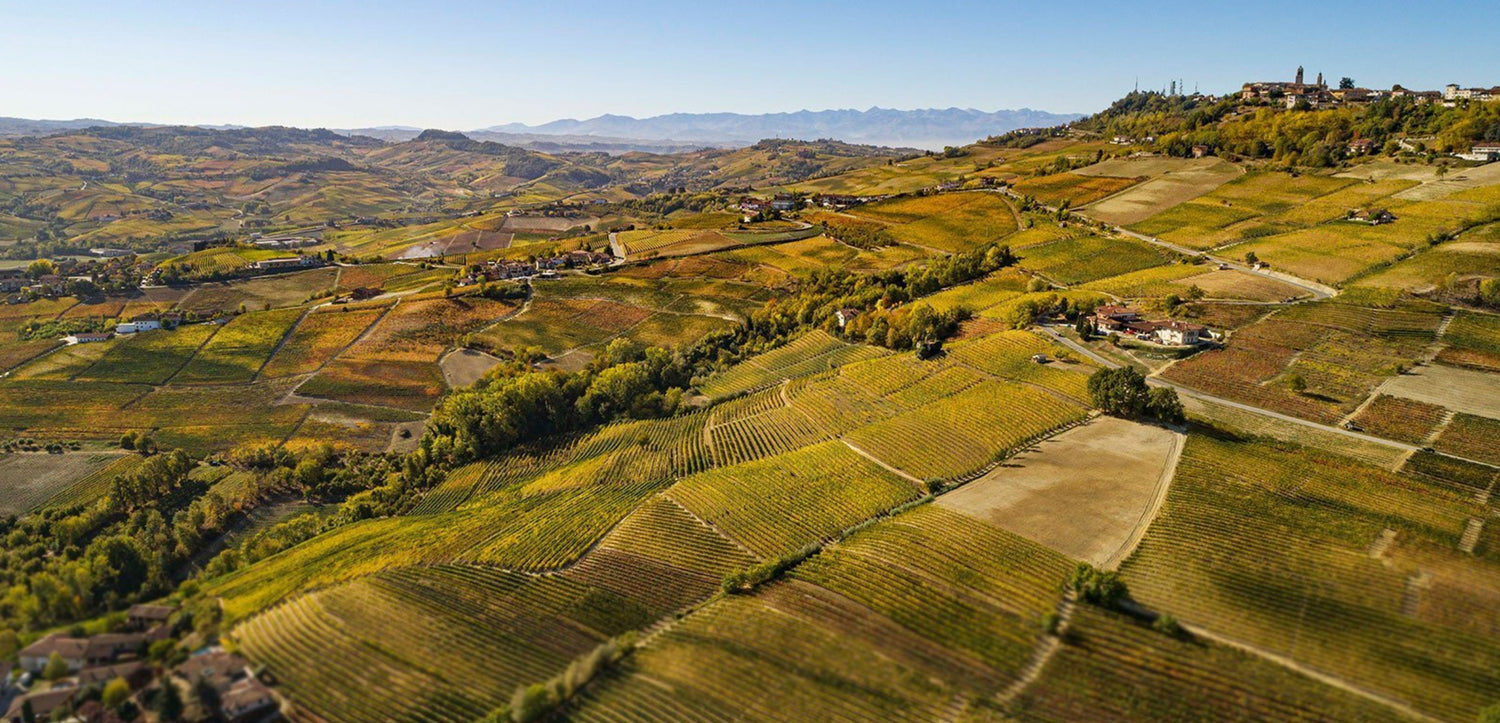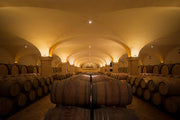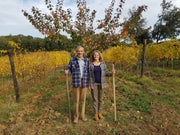Barolo Buying Guide - 10 Tips for Buying a Barolo

Buy Barolo and enjoy it to the fullest!
The Barolo is also called the King of Wines, the wine of Kings.
Introduction:
Barolo comes from the heart of the Langhe, an area in the Piemonte region. Barolo is a great wine, made from only the best Nebbiolo grapes and a minimum maturation in wooden barrels of 18 months and a total maturation of at least 38 months after the harvest. The Barolo area is not very large, it has a length of about 10 km and a width of 5 km. In total, around 1,700 hectares of vineyards with Nebbiolo grapes have been planted for the production of Barolo.
In the Langhe there are about 800 wine producers of this beautiful Barolo. It is good to know that there can be big differences between the Barolos of these 800 producers, and that is not only a difference in price. The Barolo zone is located 3 kilometers southwest of the Barbaresco zone. Compared to the Barbaresco zone, the Barolo zone is cooler. The vineyards are on average around 50 meters higher than the vineyards in the Barbaresco area. The harvest of the late ripening Nebbiolo grape usually takes place in early to mid-October. Like most of the southern and southeastern part of Piemonte, the area has a continental
climate tempered by the river Tanaro and its tributaries The main Barolo municipalities are Verduno, La Morra, Castiglione Falletto, Novello, Barolo, Serralunga d'Alba and Monforte d'Alba. Since 1980 Barolo is a DOCG.

History of Barolo:
As early as 1600, the wines of the Nebbiolo grapes were highly appreciated and drunk by the nobles and the Royal House of Savoy. Through further improvement of the production process, both in the vineyard and in the cellars, the Barolo won no less than 7 awards in 1873 and was named one of the most refined wines, during a wine competition in Austria. The color of the Barolo is fresh and lively ruby red, which tends to become
light to color to orange. In the nose the unmistakable scent of the Nebbiolo grapes pink and red fruit, jam, forest, undergrowth, warm notes of toast, vanilla and tobacco. In the mouth the taste is gripping, complex, layered, with powerful tannins when the wine is young. But which can become velvety soft over the years. Intense overripe red fruit, with aromas of mint and undergrowth with a powerful long lasting aftertaste. The best wine food combinations for the Barolo are: with roast or stewed beef, goat and lamb, but also with delicious old cheeses. Perhaps surprisingly, the Barolo is also a perfect match with dark chocolate or cornmeal cookies, or pastries.
Ten tips for buying the right Barolo:
It is important to know that everything concerning the quality of Barolo starts with the winemaker. One winemaker knows how to make a beautiful Barolo in “the best Barolo area” and another winemaker succeeds in making an absolute “top Barolo” in the same vineyard with the highest ratings.
The basis of quality is perfection. Perfection in the cultivation of the vineyard, the pruning of the vineyard. The careful selection of the best grapes. The best wines are made in the vineyard and can still be slightly
perfected in the cellar during the making of the wine. It will be clear that this picture of perfection also comes at a price. This is also the reason that you see large price differences between the different Barolos, up to a factor of 10 or more.
Buy a cheap Barolo? Usually this is "expensive". Sometimes you see offers of a Barolo for € 10,= or € 15,= per bottle. My experience, this is "expensive". Spend that € 15,= on another quality wine, you will enjoy it much more.

2 . A real Barolo? Or not?
The Barolo producers are affiliated with the Consortium of the Langhe Vini. This Consortium carries out many checks on the winegrowers during the production of the Barolo. The winegrowers must also keep a logbook with all the steps they take in the production process. To determine whether you are buying a "real" Barolo, we advise you to check on the website of the Consortium whether the winegrower is also affiliated with the Consortium. At the so-called "advantage" and "outlet" providers you will find Barolos on the websites with Barolos for a price of around € 15.00. If you look at the (fantasy) names of the producer, you will not find them on the website of the Consortium of producers. In short, it is questionable whether you are buying a "real" Barolo, since it is price-wise impossible to make a nice Barolo for € 15.00 with a cost price of the grapes of around € 9.00. Especially when you consider that the price of 1 hectare of Nebbiolo vineyard for Barolo wines currently has a price that can rise to around € 4,000,000 or more.
Check your favorite Barolo producer now on the Consortium website . These wines can also have the DOCG label. If you talk to the producers here in Italy about this they say: Sorry it's Italy, the printing of the labels is now
not that difficult either. Or the wines were bought from a producer who could not sell his wines. Because there is more demand than supply, the quality is then very doubtful
3. Harvest years:
Here you will find an overview of the harvest years .
With a Cru, the grapes come from a specific vineyard, with the characteristics of the vineyard, location and soil type. Or is the Barolo a blend of the Nebbiolo grapes from different vineyards. This last "basic" Barolo is always cheaper than the Cru Barolos. Cru Barolos are more refined and have the specific characteristics of the vineyard.
A Cru Barolo will generally also better suit your own taste profile.
The Barolo area can be divided into two different zones with different soil types. The soil type in the southwestern part of the Barolo area near the municipalities of Serralunga d'Alba, Castiglione Faletto and Monforte d'Alba is compact sandstone with soil dating back to the Helvetian era (oldest part) with yellow-white marl. In the more northerly La Morra the soils date back to the Messinian era with a lot of blue-gray marl. These soils were formed between 15 and 5 million years ago by the gradual retreat of the Padano Sea and by successive climatic and seismic events.
So when making your choice there is clearly a difference.
a. The Barolos from Serralunga, Castiglione Falletto, Montforte d' Alba and some of the vineyards located near the town of Barolo have a higher acidity and more powerful tannins. These Barolos also have a longer
shelf life. (up to 30 years or more)
b. The Barolos from La Morra, Verduno and partly from the town of Barolo are more refined wines, with soft tannins, ready to drink sooner, but also less durable (up to around 20-25 years). The soil type here is calcareous
marl, which is more compact and fertile. In addition, there are alkaline clay deposits that tame the naturally high acidity of Nebbiolo.
Especially when the wines are stored for a long time, the differences in the terroir will become more clearly recognizable in the wines.
Below you can see a map of the Barolo DOCG area, with the different subregions. All the different colors represent the hills where the Crus come from.

6. Age of sticks/plants
The age of the vines has a great influence on the quality and complexity of the wines. The older the vines, the more complexity in flavours the grapes provide. The grapes come from younger vines and are generally somewhat flatter and paler. Younger vines, on the other hand, generally provide a higher yield than older vines. The yields of older vines are therefore much lower. With quality Barolos, the yield is often a maximum of 1 kg, or the yield to make 1 bottle of wine. With most wines in our range, you will therefore find the age of the vines described with the wines.
7. A traditionally or modernly made Barolo?
Furthermore, a distinction can be made between producers who still let their Barolo mature in a traditional way. The Barolo matures in large oak barrels of 70-120 hl. Modern producers choose to mature their wines in smaller French oak barriques. Some use only new barriques, which makes the wood more dominant in the wine. The aromas and taste of the wood are more noticeable in the wines. The wines get a different character due to the different maturation methods. In this way, the producer can also give his wines their “own” face, style.
8. Barolo Reviews
Every year, many hundreds of Barolos are assessed by wine journalists. They give you an impression of what they think of these Barolos. The most important sources of information for assessing Barolos are, among others, De Gambero Rosso, the most authoritative guide for Italian wines, and the Bibenda, the assessments of Italian sommeliers. Furthermore, there are many “websites” where wine journalists give their opinion about the Barolos they have tasted. The most important in this are James Suckling, Robert Parker, Jancis Robinson and Vinous. The advantage of these “online” wine journalists is that they often have their assessments available earlier than the traditional paper Italian guides. Moreover, it is easier to search on these “paid” websites with assessments.
9. Really enjoy a Barolo
Do not drink the Barolo too young - at least 6 to 7 years after the harvest - even better 10 years after the harvest
- Decant the wine or open the bottle a few hours in advance
- Drink the wine at a maximum of 16-18ºC. Room temperature is generally too warm, this is around 20-21ºC.
- Combine the wine with a nice piece of meat, make a Barolo Risotto, or with delicious mature cheese. Barolo is a real “food wine”.
10. Making your choice.
We have tried to help you with this buying guide to make your choice. Let one thing be clear, there is no “best Barolo”. The best Barolo is the Barolo that best suits your taste profile. Some people like an elegant, complex Barolo, then it is best to choose a Barolo from La Morra, Verduno or Barolo. If you like a more powerful wine and enjoy firm tannins, then it is better to buy a Barolo from Serralunga, Montforte d'Alba or Castiglione Faletto.
Based on this first selection you can determine how much money you would like to spend on a Barolo. The prices of the wines are, as previously indicated, determined by the quality that the winemaker can and wants to make and of course also the "name" of the producer. With some producers with "big well-known names" you also pay extra for the name recognition and marketing.
You can then make your selection based on your own experiences, possibly supplemented with the assessments of one or more wine journalists. Please note that the assessments between wine journalists can also differ considerably. A matter of taste.
If you would like to have our advice in making your choice? We are happy to help you. We know the wines, the winemakers and we have an extensive selection of different Barolos so that we can give you the best advice completely independently.
To make it easier for you to make your choice, we have grouped our Barolo selection according to the different Cru areas. You can find these in our Barolo menu. Or on the left of the page with the filters.


